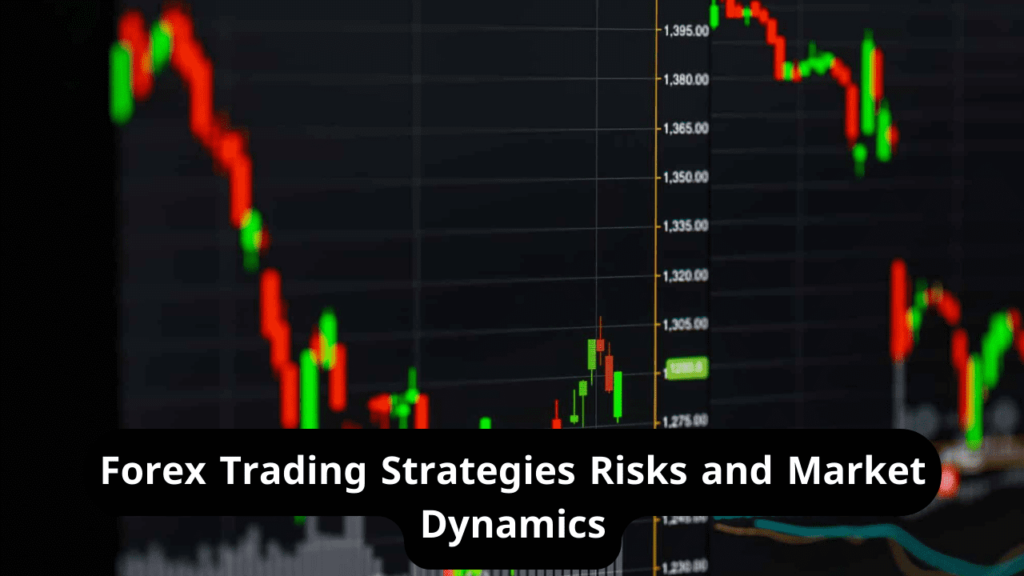
Introduction
Forex (foreign exchange) trading is a global marketplace for buying and selling currencies. It’s the largest and most liquid financial market in the world, offering opportunities for traders to profit from currency fluctuations. This comprehensive guide explores the fundamentals of Forex trading, from understanding currency pairs to advanced trading strategies. Whether you’re a beginner or an experienced trader, this article provides valuable insights into navigating the Forex market effectively.
1. Basics of Forex Trading
1.1. What is Forex Trading?
- Definition of Forex trading and its significance in global finance.
- Explanation of how currencies are traded in pairs and understanding exchange rates.
1.2. History and Evolution of Forex Markets
- Evolution from the Bretton Woods system to the modern electronic trading era.
- Impact of technological advancements on Forex trading practices.
1.3. Market Participants
- Roles of major participants in the Forex market (banks, institutional investors, retail traders).
- Influence of central banks and geopolitical events on currency valuations.
2. Understanding Currency Pairs
2.1. Major Currency Pairs
- Overview of major Forex pairs (EUR/USD, GBP/USD, USD/JPY) and their characteristics.
- Factors influencing the movement of major currency pairs.
2.2. Cross Currency Pairs
- Definition and examples of cross currency pairs (EUR/GBP, AUD/JPY, GBP/JPY).
- Trading strategies specific to cross currency pairs and their market dynamics.
2.3. Exotic Currency Pairs
- Characteristics and considerations when trading exotic currency pairs (USD/TRY, USD/ZAR, EUR/SEK).
- Risks and opportunities associated with exotic currency trading.
3. Fundamental Analysis in Forex Trading
3.1. Economic Indicators
- Key economic indicators that impact currency valuations (GDP, CPI, employment data).
- Using economic calendars and news events in Forex trading decisions.
3.2. Central Bank Policies
- Influence of central bank decisions (interest rates, monetary policy) on Forex markets.
- Strategies for trading based on central bank announcements and policy changes.
3.3. Geopolitical Events
- Impact of geopolitical events (elections, trade agreements, conflicts) on currency markets.
- Hedging strategies and risk management during geopolitical uncertainties.
4. Technical Analysis Strategies
4.1. Basics of Technical Analysis
- Introduction to technical analysis tools (charts, indicators, patterns) in Forex trading.
- Using trendlines, support and resistance levels, and moving averages effectively.
4.2. Chart Patterns
- Identification and interpretation of common chart patterns (head and shoulders, double tops/bottoms, triangles).
- Applying chart patterns to predict price movements and formulate trading strategies.
4.3. Advanced Technical Indicators
- Utilizing oscillators (RSI, MACD), momentum indicators, and volume analysis in Forex trading.
- Combining multiple indicators for confirmation and trend analysis.
5. Trading Strategies in Forex
5.1. Day Trading
- Strategies for intraday trading and capitalizing on short-term price fluctuations.
- Risk management techniques and timing considerations for day traders.
5.2. Swing Trading
- Holding positions over days or weeks to capture medium-term market trends.
- Swing trading strategies based on technical and fundamental analysis.
5.3. Position Trading
- Long-term trading approach focusing on fundamental factors and macroeconomic trends.
- Portfolio diversification and risk mitigation strategies for position traders.
6. Risk Management in Forex Trading
6.1. Setting Risk Parameters
- Implementing risk management strategies (stop-loss orders, position sizing) to protect capital.
- Calculating risk-reward ratios and maintaining disciplined trading practices.
6.2. Psychological Discipline
- Overcoming psychological barriers (greed, fear) and maintaining emotional balance in Forex trading.
- Techniques for improving trading psychology and decision-making under pressure.
6.3. Monitoring and Reviewing Trades
- Importance of trade journaling and performance analysis in evaluating trading strategies.
- Learning from past trades and continuous improvement in Forex trading skills.
7. Regulatory Landscape and Market Dynamics
7.1. Regulatory Framework
- Overview of regulatory bodies overseeing Forex trading (CFTC, FCA, ASIC).
- Compliance requirements for brokers and traders and the impact of regulations on market transparency.
7.2. Market Liquidity and Volatility
- Understanding market liquidity and its impact on order execution and trading costs.
- Strategies for trading in volatile market conditions and minimizing slippage.
7.3. Technological Advancements
- Role of technology (algorithmic trading, trading platforms) in enhancing Forex trading efficiency.
- Emerging trends in trading technology and their implications for Forex market participants.
8. Emerging Trends in Forex Trading
8.1. Cryptocurrencies and Forex
- Integration of cryptocurrencies (Bitcoin, Ethereum) into Forex trading platforms.
- Opportunities and challenges of trading cryptocurrency pairs in the Forex market.
8.2. Sustainable and Ethical Trading
- Trends towards sustainable investing practices and ESG (Environmental, Social, Governance) criteria in Forex trading.
- Impact investing and socially responsible trading strategies in the Forex market.
8.3. Global Economic Shifts
- Influence of global economic shifts (trade wars, economic sanctions) on Forex market trends.
- Strategic responses to geopolitical and economic developments affecting currency valuations.
9. Conclusion: Mastering Forex Trading
Forex trading offers diverse opportunities for traders worldwide, but success requires a solid understanding of market fundamentals, effective trading strategies, and disciplined risk management. By continuously learning, adapting to market dynamics, and adhering to regulatory requirements, traders can navigate the complexities of the Forex market with confidence. Whether you’re aiming to generate short-term profits or build a long-term investment portfolio, mastering Forex trading is a continuous journey of education and application.